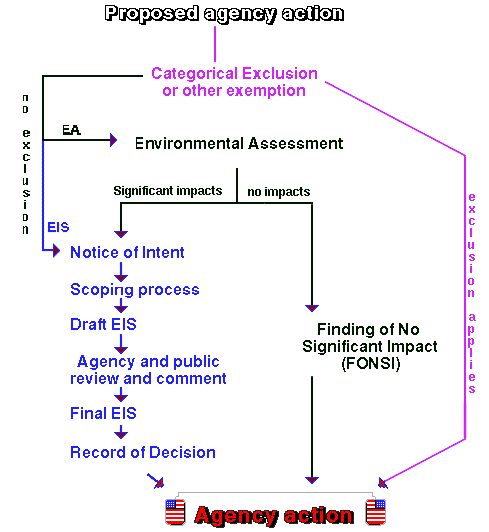The CEQ has published revised draft guidance for federal agencies on how to evaluate emissions and climate impacts of proposed actions in their NEPA reviews.
On December 24, 2014, the Council on Environmental Quality (CEQ) published a revised draft guidance to provide direction for federal agencies on how to consider greenhouse gas (GHG) emissions and climate impacts in their National Environmental Policy Act (NEPA) reviews. The revised draft guidance supersedes CEQ’s February 2010 draft guidance, which did not apply specifically to land and resource management activities; it removes the distinction and applies to all proposed federal agency actions subject to NEPA review.
In addressing climate impacts, the revised draft guidance requires agencies to consider:
- Potential climate effects of a proposed action as indicated by its GHG emissions
- Climate implications for the environmental effects of a proposed action
The revised draft outlines how federal agencies should describe potential GHG and climate effects for decision makers and public to fully understand the environmental impacts of proposed actions and facilitate better comparison of alternatives to consider remedial measures. It is designed to facilitate compliance with existing NEPA requirements, improving the efficiency and consistency of proposed federal action reviews for agencies, decision makers, project proponents, and public.
The guidance encourages agencies to use their experience and expertise to determine the appropriate analysis level — ranging from a broad and programmatic level to a project- or site-specific level — and quantitative or qualitative method for NEPA compliance. It prioritizes actions with the greatest impact by providing a reference point of 25,000 metric tons of carbon dioxide equivalent emissions — on an annual basis — below which a quantitative emissions analysis is not recommended unless it is easily accomplished. It counsels agencies to use information developed during NEPA review to consider climate resilience alternatives and use existing information to assess proposed actions; it also highlights available tools and methodologies to conduct analyses.
The Task Force on Climate Preparedness and Resilience requested the guidance in November to ensure advanced projects and investments with adequate and coordinated consideration of project design or alternatives with regard to GHG and climate impacts to avoid unacceptable health, safety, and financial risks. The revised draft guidance will be open for a 60-day comment period.









